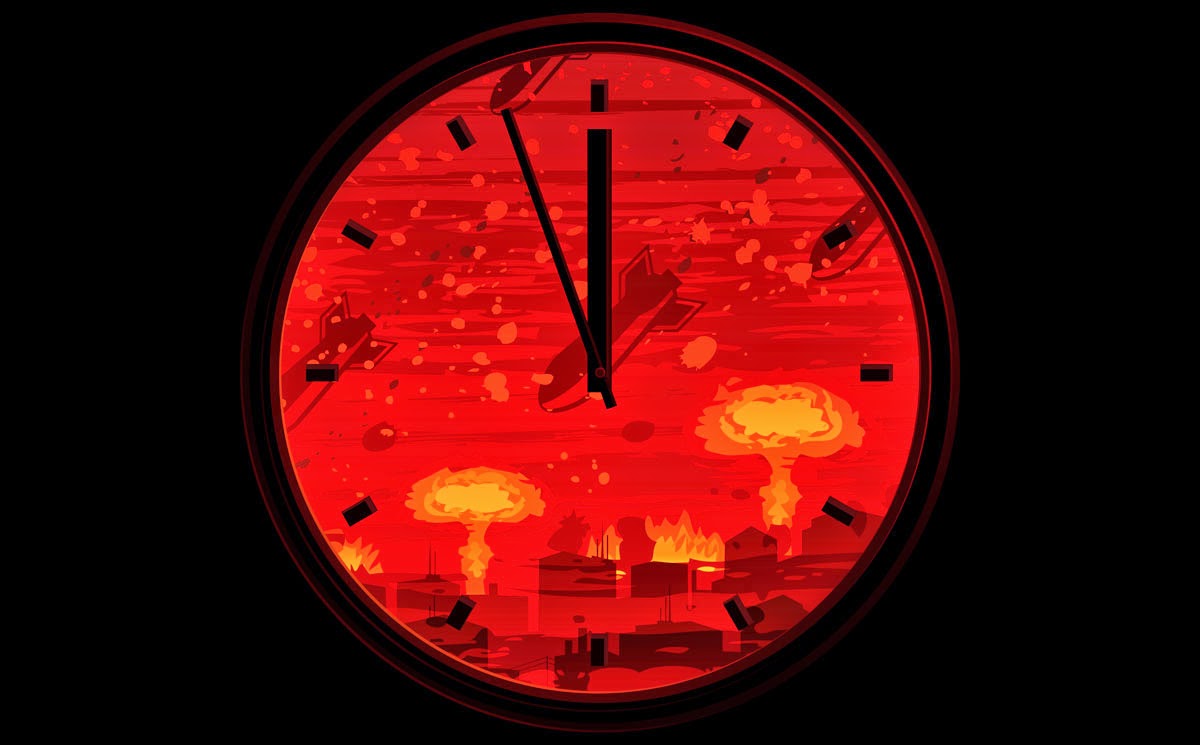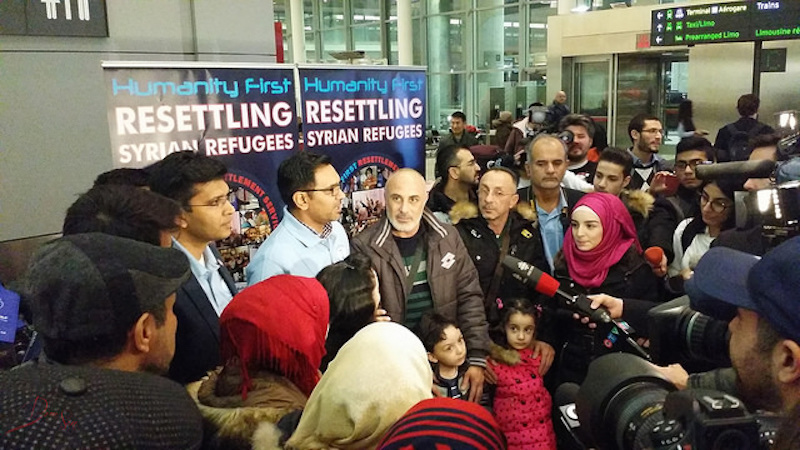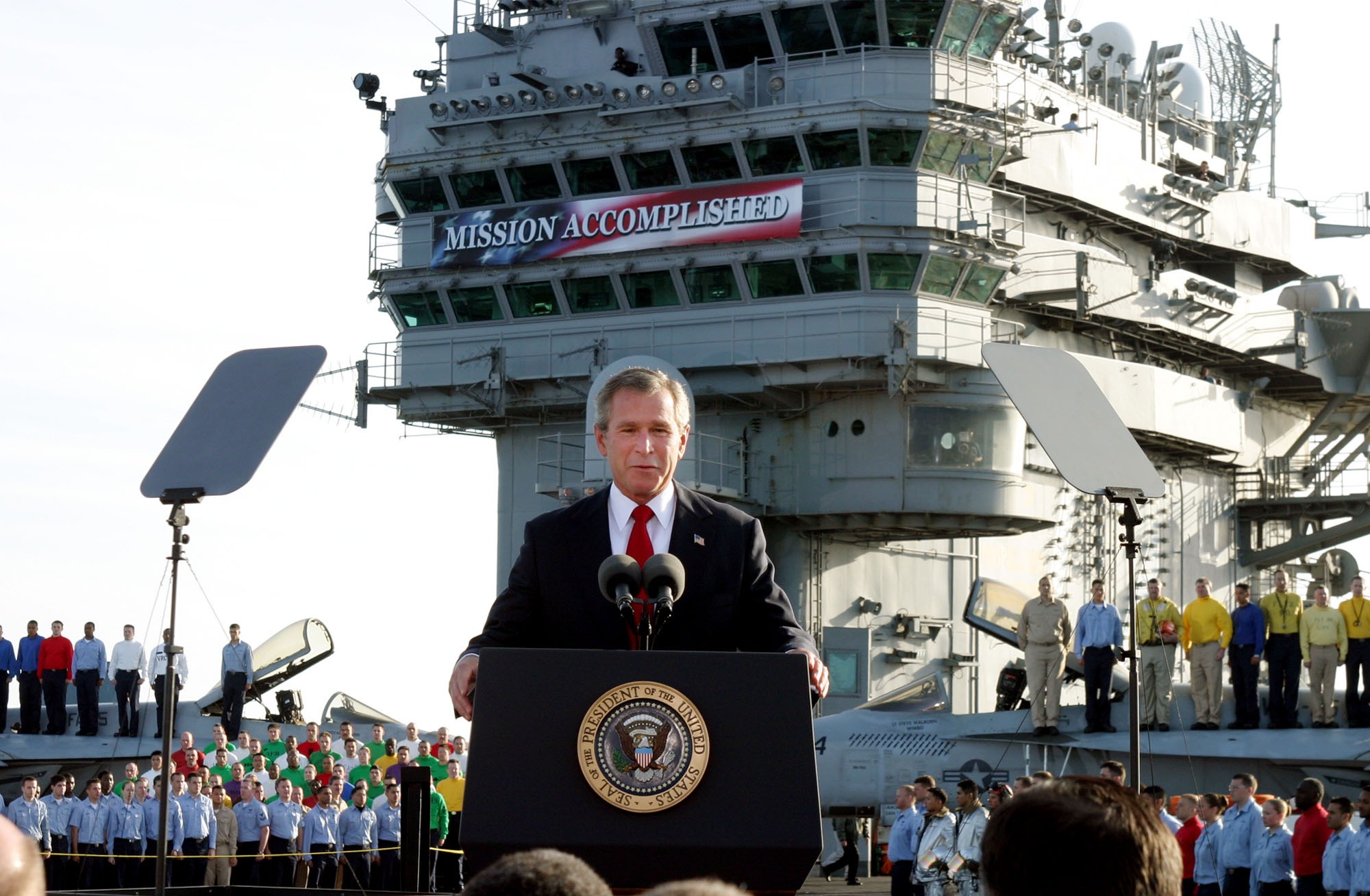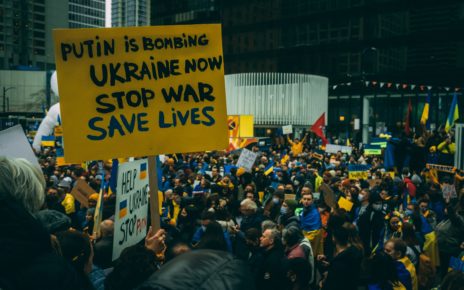The Doomsday Clock has now struck three minutes to midnight, the closest it has been to midnight since 1953 when both the U.S. and Soviet Union first tested thermonuclear weapons. Now 2015, tensions between NATO and Russia are growing high as each accuses the other of Cold War style military intimidation.
 NATO concluded its annual defense ministers meetings in Brussels last week where they discussed, among other things, Russia aggression in Eastern Europe. NATO Secretary General Jens Stoltenberg had strong words for Russia, saying: “What Russia has done in Ukraine is not defensive, to annex (Crimea)… that is an act of aggression.” And that “Russia continues to send troops, forces, and supplies to Eastern Ukraine…there is no doubt that Russia is responsible for aggressive actions in Europe.” In response to this aggression Stoltenberg stated that “We don’t seek confrontation, we don’t seek an arms race with Russia but we have to keep our countries safe.”
NATO concluded its annual defense ministers meetings in Brussels last week where they discussed, among other things, Russia aggression in Eastern Europe. NATO Secretary General Jens Stoltenberg had strong words for Russia, saying: “What Russia has done in Ukraine is not defensive, to annex (Crimea)… that is an act of aggression.” And that “Russia continues to send troops, forces, and supplies to Eastern Ukraine…there is no doubt that Russia is responsible for aggressive actions in Europe.” In response to this aggression Stoltenberg stated that “We don’t seek confrontation, we don’t seek an arms race with Russia but we have to keep our countries safe.”
To “keep these countries safe,” NATO allies decided on a number of defensive measures to defend its allies against Russia aggression in Eastern Europe. The first was to upgrade its Rapid Response Force to 40,000 troops, from 13,000 previously. The defense ministers also agreed to add sea, air, and special operations to the broader response force, while solidifying its 5,000 strong high readiness “Spearhead Force” which will be able to deploy on short notice to crisis zones. Canada announced that it was ready to offer air-to-air refueling, and recon or transport planes for the Response Force.
For its part, the U.S. said it would contribute special operations forces, intelligence and other high end military assets to the new Spearhead Force. It also announced that it would pre-position heavy weapons in the alliances eastern most countries, including some 90 Abrams tanks, 140 Bradley armoured vehicles, and 20 self-propelled howitzers. Estonia, Lithuania, Latvia, Bulgaria, Romania, and Poland agreed to take the equipment which will be used for training and exercises, and will be moved around the region as required.
 In addition to these moves, NATO has continued to conduct major military exercises on land, air, and sea to improve interoperability between allied nations. It recently completed its annual BALTOPS exercise in the Baltic Sea, which included 49 warships from 14 NATO countries, along with forces from Finland and Sweden who chose to join as NATO “partner” countries. On land NATO also recently concluded its annual Saber Strike training exercise in the Baltic’s and Poland which included more than 6,000 troops from 14 allied nations, three times the number of forces that joined the exercise two years ago before Russia’s invasion of Ukraine.
In addition to these moves, NATO has continued to conduct major military exercises on land, air, and sea to improve interoperability between allied nations. It recently completed its annual BALTOPS exercise in the Baltic Sea, which included 49 warships from 14 NATO countries, along with forces from Finland and Sweden who chose to join as NATO “partner” countries. On land NATO also recently concluded its annual Saber Strike training exercise in the Baltic’s and Poland which included more than 6,000 troops from 14 allied nations, three times the number of forces that joined the exercise two years ago before Russia’s invasion of Ukraine.
NATO is also set to hold its biggest military exercise since the end of the Cold War, Operation Trident Juncture, which will be held between late September and early November of 2015. The exercise will be held in Spain, Portugal, and Italy, and will involve more than 25,000 troops from allied and partner countries. Canada has committed to send 1,650 soldiers which will include air, sea, land, and special forces elements.
While NATO sees Russian actions in Eastern Europe, Ukraine specifically, as aggressive, Russia has the view that it is only defending itself from NATO expansion on its borders. Since the fall of the Soviet Union and end of the Cold War Russia has seen its former satellite states slowly join NATO one by one, moving closer and closer to its border. The fear of foreign invasion runs deep in Russia, with a history of invasions from the Mongols, to Napoleon, and most recently Hitler.
Russia has thus begun to increase its posturing towards NATO since its invasion of Ukraine. It has increased its military presence all across its Western border and has conducted its own military exercises. One such exercise according to a new study of Baltic Security was a rehearsed invasion of four countries which included 33,000 troops. The exercise practiced attacking North Norway, capturing the Aland Islands from Finland, the Gotland Islands from Sweden, and Borhholm from Denmark. The capture of these territories would allow Russia to seal off the Baltic and isolate Estonia, Latvia, and Lithuania in the event of conflict with NATO.
Russia also recently announced that it will be buying 40 new nuclear ballistic missiles this year to upgrade its current arsenal. NATO heavily criticized this announcement as it is seen as an unnecessary escalation of tensions between Russia and NATO. In response to the criticism of Russia’s missile program, Putin’s spokesman, Dmitry Peskov said “It’s not Russia that’s approaching someone’s borders. It’s NATO’s military infrastructure that is approaching the borders of Russia,” and that “all this…forces Russia to take measures to safeguard its own interests, its own security.”
The question then is, are Russian fears valid? The answer is “No”, NATO is a defensive alliance, Sovereign states ask to join NATO, not the other way around. NATO has never asked Ukraine, or any other country for that matter to join NATO. NATO buildup is due to the fact that Russia has been aggressive in the region from 2008 in Georgia, to 2014 in annexing Crimea and supporting pro-Russian rebels in Ukraine. It is also based on the fears of the Baltic countries like Latvia, Lithuania, and Estonia who fear a similar Russian incursion on its territories. This does not mean however that there is no hope, NATO is, and always has been willing to include Russia as a strategic partner. A further escalation between the alliance and Russia will also not be beneficial to either side. Not all has been lost, but both sides must re-open diplomatic channels and find common ground before the clock strikes midnight.





